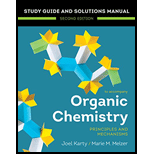
Concept explainers
(a)
Interpretation:
The number of chiral centers in the given molecule is to be determined.
Concept introduction:
An atom must be
(b)
Interpretation:
Number of chiral centers in the given molecule is to be determined.
Concept introduction:
An atom must be
(c)
Interpretation:
Number of chiral centers in the given molecule is to be determined.
Concept introduction:
An atom must be
(d)
Interpretation:
Number of chiral centers in the given molecule is to be determined.
Concept introduction:
An atom must be
Want to see the full answer?
Check out a sample textbook solution
Chapter 5 Solutions
Organic Chemistry: Principles And Mechanisms: Study Guide/solutions Manual (second)
- For each of the following molecules, assign whether the molecule is chiral or achiralarrow_forwardDesignate the chiral centers of the following molecules and show which one of them is achiral?arrow_forwardTo the following statement, answer true or false and explain your answer. Q)To be meso, a molecule must have at least two chiral centersarrow_forward
 General, Organic, and Biological ChemistryChemistryISBN:9781285853918Author:H. Stephen StokerPublisher:Cengage Learning
General, Organic, and Biological ChemistryChemistryISBN:9781285853918Author:H. Stephen StokerPublisher:Cengage Learning Organic And Biological ChemistryChemistryISBN:9781305081079Author:STOKER, H. Stephen (howard Stephen)Publisher:Cengage Learning,
Organic And Biological ChemistryChemistryISBN:9781305081079Author:STOKER, H. Stephen (howard Stephen)Publisher:Cengage Learning, Organic Chemistry: A Guided InquiryChemistryISBN:9780618974122Author:Andrei StraumanisPublisher:Cengage Learning
Organic Chemistry: A Guided InquiryChemistryISBN:9780618974122Author:Andrei StraumanisPublisher:Cengage Learning- Chemistry: Matter and ChangeChemistryISBN:9780078746376Author:Dinah Zike, Laurel Dingrando, Nicholas Hainen, Cheryl WistromPublisher:Glencoe/McGraw-Hill School Pub Co
 Macroscale and Microscale Organic ExperimentsChemistryISBN:9781305577190Author:Kenneth L. Williamson, Katherine M. MastersPublisher:Brooks Cole
Macroscale and Microscale Organic ExperimentsChemistryISBN:9781305577190Author:Kenneth L. Williamson, Katherine M. MastersPublisher:Brooks Cole




